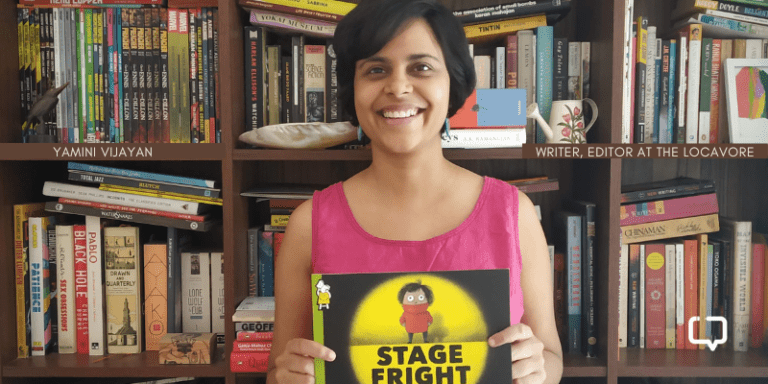Amritesh Mukherjee reviews Tarun K. Saint’s The Hachette Book of Indian Detective Fiction (published by Hachette India, 2024).
Some of my favourite childhood memories involve reading mystery stories through afternoons and evenings, reading cover-to-cover in one go, from stories of Vikram Betaal and Akbar Birbal to Hardy Boys and the Secret Seven. The Hachette Book of Indian Detective Fiction, in many ways, brought back those afternoons and childhoods, engrossed in a mystery, awaiting a resolution and creating deductions of my own.
There’s a certain fascination that crimes evoke, the why-s, what-s, and how-s of it, the almost-hypnotic characteristics of that textbook elusive criminal, and the faint hope of “justice” being served despite. Indian literature and detective fiction have never conventionally been related to each other, even though judicial tales have been a major part of oral stories passed on by generations, including Akbar-Birbal or Tenaliram, where a king or his courtier helps solve some conflict among the masses.
The Hachette Book of Indian Detective Fiction (note: Indian Detective Fiction, and not the best of Indian Detective Fiction) is an important step in removing the disjointedness of detective stories in Indian literature, highlighting some of the major writers and stories in this genre while simultaneously showing the evolution of the art form in the Indian context.
The Cover Design of The Hachette Book of Indian Detective Fiction
Let’s first talk about the aesthetic, shall we? There’s a certain cosiness to the designs, a retro aesthetic with tobacco pipes and pistols as edge designs, and cats and windows with books on the endpapers. It’s a collection that’s meant to be treasured, perhaps used as a source of campfire stories, a collection that’s as delightful to hold as it is to read. The covers have bright red and yellow designs, with the illustrations continuing through spines and covers. The design subtly sets the mood for all that’s to follow.
Themes of the Anthology
In his brilliant introduction to the anthology, Tarun K. Saint looks at the evolution of Indian detective fiction through the decades since the early stories in Bengali literature. For instance, speaking of the early Bengali detective fiction stories, he writes:
We can often discern, even in tales with a contemporary setting, a longing for prelapsarian or precolonial innocence, an illustration of a subcontinental variation of the pastoralizing impulse with a different metaphysical and historical basis.
Tarun K. Saint, The Hachette Book of Indian Detective Fiction
Inspired by the Conan Doyles and the Agatha Christies, the early Indian detective fiction had stark resemblances to these stories, yet was bound by a strong local (one may call it South Asian, but that would be discounting the cultural diversity of the region) sensibility. These sensibilities aren’t merely limited to the cultural aspects, like descriptions of scenery, food, clothes, etc., but extend to deeper themes, whether via postcolonial sentimentalities or feminist struggles in everyday proceedings.
Recommended Reading: 8 Contemporary Indian Fictional Detectives
An interesting instance comes to mind, from Murder in the Monsoons by Shashi Warrier. Describing a character’s dress, she quickly corrects herself, creating a stronger and more distinctive impression than mentioning it so, directly:
“Her daughter, Lakshmi, peeped at me from behind her mother’s skirts – mundu, not skirts, actually – with grave black eyes that seemed at once to examine and judge.”
The Diversity of Stories
The anthology is neatly divided into five segments, namely:
- Classic Detective Fiction: The Amateurs
- Experimental/Parodic Detective Fiction
- Hybrid SF/Fantasy/Existential Detective Fiction
- Police Procedurals: The Professionals
- Historical Mysteries: Excavating the Tangled Past
You see iconic characters, the likes of Feluda, Byomkesh Bakshi, and Shankarlal, characters who largely shaped the earlier Indian detective fiction genre, along with relatively newer detectives in the game, many challenging the patriarchal status quo of the genre and society itself. There are familial conflicts leading to murders, extramarital affairs leading to murders, jilted relationships leading to murders, and political power leading to, well, murders. It’s an assortment, really, one of a kind.
It’s the stories in the experimental and hybrid sections that are the most enthralling for their sheer ingenuity, if not mystery. In one story, a criminal operation is being run via artificial intelligence, while in another, an author wonders where to take his story next, rehashing plot devices and subverting expectations in the process. There are witches, time portals, chudails, and mind-controlling tantriks, with authors blurring the distinct boundaries of this genre and claiming it as their own.
Then there are the historical or police mysteries, with some being both historical and police mysteries, one has Rudyard Kipling himself organising a seance, one where witnessing the brutality of the Partition riots pushes a character to depression and ultimately, suicide, one where caste-based violence leads to a murder in a college campus, and one where a murder witnessed in childhood still troubles a soldier returning from the second world war.

It brings me to a point I mentioned in passing above, that of this being an anthology of Indian detective fiction, and not the best of the genre. That’s not to say that these are not some of the finest Indian (or South Asian) writers to have written in this genre, but that the definition of “best” can be contested, and it’s a futile tangent to discover. What the book is more interested in discovering, and what it greatly succeeds in, too, is capturing the breadth of Indian detective fiction without limiting itself to the sleuths and police proceedings.
Favourite Quotes from The Hachette Book of Indian Detective Fiction
Maybe I should slow down. What am I trying to do? Reinvent the detective story.
– Anil Menon, A Death Considered
Oh please. What am I, Chekhov? Jane Austen? Agatha Christie?
Okay, what am I really trying to do with detective novels?
I am not famous enough to be invited for a panel discussion and therefore I have panel discussions with myself. I ask myself why I want to write detective mysteries. Why can’t I be like the other genteel Indian women authors, content to write stories with recipes and life gyaan from their fucking grandmothers? Life would be so much easier.
Life doesn’t edit itself only to moments of significance: a detective lives a whole life, eats, shits, fucks, scratches, reads, runs, buys, sells, etc. The crime-solving obsession we detectives are routinely portrayed with is fake. That consuming angst, those high-nicotine late-nighters, those photos and maps and bank statements and insurance claims pinned to boards, clues prepared to slug it out – all that stuff never happens.
– Tanuj Solanki, The Desire of the Detective
But who’s drawing the line? Are we killing only potential killers and rapists? Or mob-men? If you’re killing thieves, what about a one-time shoplifter? Who draws the line, detective?
– Kehkashan Khalid, Andheri Nagri
You see, I learnt all about economic systems in this super-best college with its super-great teachers and its super-bright students. And nobody said a word about how being from the wrong caste is a crime for which you are punished every day in every way. No super-famous economist expounded a theory about how money and marriage and labour and dignity and futures and presents are stolen from us daily and no thief is ever caught and punished for these barbaric crimes.
– Giti Chandra, A Darkling Plan
Conclusion
Regardless of your interest in the mystery genre, I think this book of Indian detective fiction warrants a read by everyone. Not only does it encompass a wide variety, but the stories included capture the living subconscious of a nation in flux, of a complex society shaped by numerous influences and historical events. With an intermixing of popular and not-so-popular authors and characters, it’s a great step ahead for Indian mystery fiction that shall hopefully continue with future volumes.






















